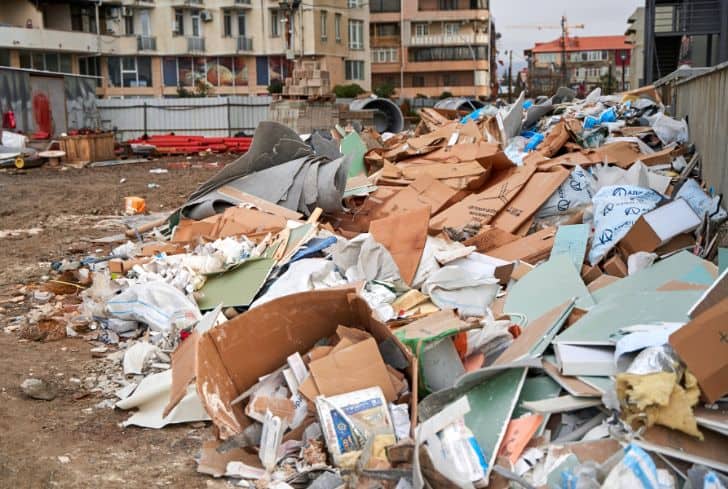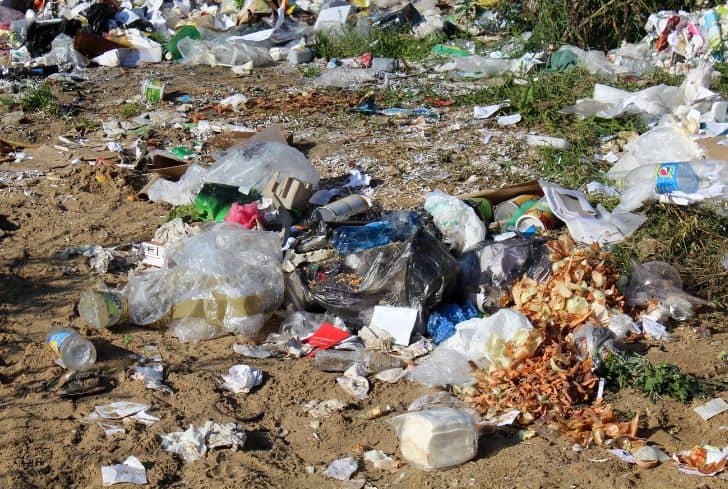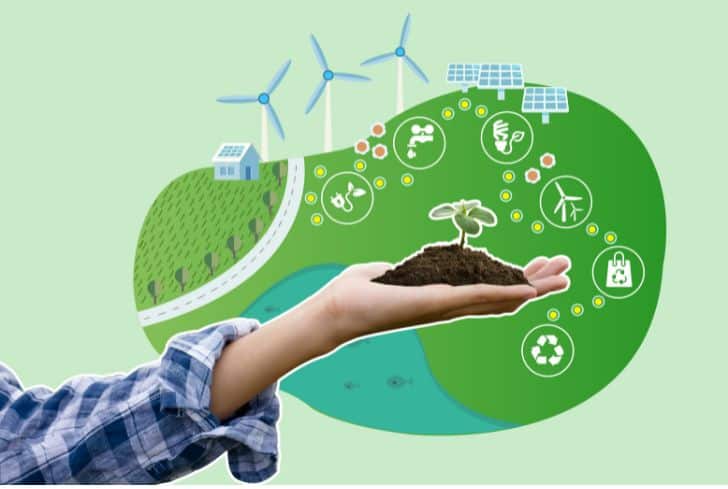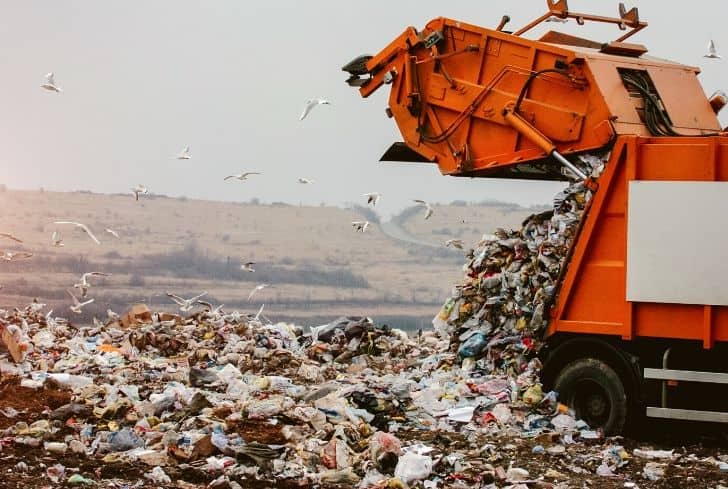Solid waste management is a term used to refer to the process of collecting and treating solid wastes. It also offers solutions for recycling items that do not belong to garbage or trash.
As long as people live in settlements and residential areas, garbage or solid waste remains an issue. Waste management is about how solid waste can be changed and used as a valuable resource.
Every household, including business owners worldwide, should embrace solid waste management.
According to Britannica,
“Solid-waste management, the collecting, treating, and disposing of solid material that is discarded because it has served its purpose or is no longer useful. Improper disposal of municipal solid waste can create unsanitary conditions, and these conditions in turn can lead to pollution of the environment and to outbreaks of vector-borne disease—that is, diseases spread by rodents and insects.”
Categories of Waste
- Organic waste: Kitchen waste, waste from food preparation, vegetables, flowers, leaves, fruits, and marketplaces.
- Combustibles: Paper, wood, dried leaves, packaging for relief items, etc. This category of waste entails those that are highly organic and have low moisture content.
- Non-combustibles: Metal, tins, cans, bottles, stones, etc.
- Toxic waste: Old medicines, paints, chemicals, bulbs, spray cans, fertilizer, and pesticide containers, batteries, and shoe polish.
- Recyclables: Paper, glass, metals, plastics.
- Ashes or Dust: Residue from fires used for cooking.
- Construction waste: Rubble, roofing, broken concrete, etc.
- Hazardous waste: Oil, battery acid, medical waste, industrial waste, hospital waste.
- Dead animals: Carcasses of dead livestock or other animals.
- Bulky waste: Tree branches, tires, etc.
- Soiled waste: Hospital waste such as cloth soiled with blood and other body fluids.
The types of litter and their approximate degeneration time
[table id=1 /]
Various Sources of Solid Waste
Every day, tonnes of solid waste are disposed of at various landfill sites. This waste comes from homes, offices, industries, and agricultural-related activities, among other sources.
These landfill sites produce a foul smell if the waste isn’t stored and treated properly. It can pollute the surrounding air and seriously affect the health of humans, wildlife, and our environment.
The following are major sources of solid waste:
1. Residential
Residences and homes where people live are some of the major sources of solid waste. The garbage from these places includes food waste, plastics, paper, glass, leather, cardboard, metals, yard waste, ashes, and special wastes like bulky household items such as electronics, tires, batteries, old mattresses, and used oil.
Most homes have garbage bins to hold their solid wastes before the bin is emptied by a garbage collecting firm or person for treatment.
2. Industrial
Industries are among the biggest contributors to solid waste generation, notable examples being the light and heavy manufacturing industries, construction sites, fabrication plants, canning plants, power plants, and chemical plants.
These industries produce a wide range of solid waste, including housekeeping waste, food waste, packaging waste, ashes, construction and demolition materials, special wastes, medical wastes, and other hazardous wastes.
3. Commercial
Commercial facilities and buildings are yet another source of solid waste today. Commercial buildings and facilities, in this case, refer to hotels, markets, restaurants, godowns, stores, and office buildings.
Some of the solid wastes generated from these places include plastics, food wastes, metals, paper, glass, wood, cardboard materials, special wastes, and other hazardous wastes.
4. Institutional
Institutional centers like schools, colleges, prisons, military barracks, and other government centers also produce solid waste.
Glass, rubber waste, plastics, food waste, wood, paper, metals, cardboard materials, and electronics are only a few examples of waste they generate.
5. Construction and Demolition Areas
Construction and demolition sites, whether new construction sites or buildings, roads, road repair sites, or building renovation sites, can also contribute to the solid waste problem.

Waste from these sources can come in various forms: steel materials, concrete, wood, plastics, rubber, copper wires, dirt, and glass.
6. Municipal Services
The urban centers also contribute immensely to the solid waste crisis in most countries today. Some of the solid waste from municipal services include street cleaning, wastes from parks and beaches, wastewater treatment plants, landscaping wastes, and wastes from recreational areas, including sludge.
7. Treatment Plants and Sites
Heavy and light manufacturing plants, including refineries, power plants, processing plants, mineral extraction plants, and chemical plants, also produce solid waste.
Among the wastes produced by these plants are industrial process wastes, unwanted specification products, plastics, and metal parts, just to mention a few.
8. Agriculture
Crop farms, orchards, dairies, vineyards, and feedlots are also sources of solid waste. You can expect these sources to generate waste in the form of agricultural waste, spoiled food, pesticide containers, and other hazardous materials.
9. Biomedical
This refers to hospitals and biomedical equipment, and chemical manufacturing firms. In hospitals, there are different types of solid wastes produced.
Syringes, bandages, used gloves, drugs, paper, plastics, food waste, and chemicals are some common examples. All these require proper disposal to keep them from causing a huge problem for the environment and the people in these facilities.
Effects of Poor Solid Waste Management
Poor solid waste management comes with a multitude of adverse effects. Here are some of them:
1. Litter Surroundings

Due to improper waste disposal systems, particularly by municipal waste management teams, wastes heap up and become a menace. While people clean their homes and places of work, they litter their surroundings, affecting the environment and the community.
2. Impact on Human Health
One of the major downsides of improper waste disposal is that it can affect the health of the people living near the affected area. It also puts the well-being of waste disposal workers and other employees involved in handling it at great risk.
Improper handling of waste exposes one to several health issues. One may suffer skin irritations, respiratory problems, blood infections, growth problems, and even reproductive issues depending on the nature of the waste they get exposed to.
3. Disease-causing Pests
Improper dumping subjects the waste to improper, unhygienic, and uncontrolled conditions, denting the area’s aesthetic value and causing biodegradable materials to rot and decompose.
After a few days of decomposition, a foul smell is produced, and it becomes a breeding ground for different types of disease-causing insects and infectious organisms.
4. Environmental Problems
Solid wastes from industries are a source of toxic metals, hazardous wastes, and chemicals. When released into the environment, this waste can cause biological and physicochemical problems that may affect or alter the productivity of the soils in that area.
5. Soil and Groundwater Pollution
Toxic materials and chemicals may seep into the soil and pollute the groundwater. During the collection process, hazardous wastes may unintentionally mix with regular garbage and other flammable materials, complicating the disposal process and posing additional risks to both human health and the environment.
6. Emission of Toxic Gases
When hazardous wastes like pesticides, batteries containing lead, mercury, or zinc, cleaning solvents, radioactive materials, e-waste, and plastics mix with paper and other non-toxic scraps and are burned, they produce dioxins, furans, polychlorinated biphenyls (PCBs), and other gases. These toxic gases have the potential to cause various diseases, including cancer.
7. Impact on Land and Aquatic Animals
Our carelessness with our waste and garbage also affects animals, and they suffer the effects of pollution caused by improperly disposed of waste and rubbish.
Consuming styrofoam and cigarette butts have been known to cause deaths in marine animals. Animals are also at risk of poisoning while consuming grasses near contaminated areas or landfills as the toxins seep into the soil.
Methods of Solid Waste Management
There are different methods of solid waste management. The following are some of the recognized methods:
1. Sanitary Landfill
This is the most popular solid waste disposal method used today. In this solid waste management method, garbage is spread out in thin layers, compacted, and covered with soil or plastic foam to contain the smell.
Modern landfills typically have the bottom of the landfill covered with an impervious liner, usually made of several layers of thick plastic and sand. This liner protects the groundwater from being contaminated because of leaching or percolation.
When the landfill is full, it is covered with layers of sand, clay, topsoil, and gravel to prevent water seepage.
Advantage: If landfills are managed efficiently, it is an ensured sanitary waste disposal method.
Constraint: It requires a reasonably large area.
2. Incineration
This method involves burning solid waste at high temperatures until it becomes ashes. Incinerators are sealed to ensure that they do not give off extreme amounts of heat to the environment when burning solid wastes.
Incinerators that recycle heat energy through furnaces and boilers are called waste-to-energy plants. These systems are more expensive to set up and operate than plain incinerators because they require special equipment and controls, highly skilled technical personnel, and auxiliary fuel systems.
This method of solid waste management can be done by individuals, municipalities, and even institutions. The good thing about it is that it reduces the volume of waste by 80 to 90%.
Advantage: The volume of combustible waste is reduced considerably by burning waste. In the case of off-site pits, it is an appropriate method to minimize scavenging.
Constraint: It can cause smoke or fire hazard and also emits gaseous pollutants.
3. Recovery and Recycling
Recycling or recovering resources takes useful but discarded items for the next use. Plastic bags, tins, glass, and containers are often recycled automatically since, in many situations, they are likely to be scarce commodities.

Traditionally, these items are processed and cleaned before they are recycled. The process aims at reducing energy loss, consumption of new material, and reduction of landfills. Most developed countries follow a strong tradition of recycling to lower volumes of waste.
Advantage: Recycling is environmentally friendly.
Constraint: It is expensive to set up, and in most emergencies, there is limited potential.
4. Composting
Due to a lack of adequate space for landfills, biodegradable yard waste is allowed to decompose in a medium designed for the purpose. Only biodegradable waste materials are used in composting.
Composting is a biological process in which microorganisms, specifically fungi, and bacteria, convert degradable organic waste into substances like humus.
The finished product of compost, which resembles soil, contains high levels of carbon and nitrogen. This environmentally friendly and nutrient-rich compost serves as excellent manure, providing an ideal medium for plant growth. It can be utilized for various agricultural purposes, promoting sustainable and eco-friendly farming practices.
Advantage: Composting is environmentally friendly as well as beneficial for crops.
Constraint: It requires intensive management and experienced personnel for large-scale operations.
5. Pyrolysis
This is a method of solid waste management whereby solid wastes are chemically decomposed by heat without oxygen. It usually occurs under pressure and at temperatures of up to 430 degrees Celsius. The solid wastes are changed into gasses, solid residue of carbon and ash, and small quantities of liquid.
Advantage: This will keep the environment clean and reduce health and settlement problems.
Constraint: The systems that destroy chlorinated organic molecules by heat may create incomplete combustion products, including dioxins and furans.
These compounds are highly toxic in the parts per trillion range. The residue it generates may be hazardous waste, requiring proper treatment, storage, and disposal.
To summarize, proper solid waste management is an integral part of environmental conservation that should be observed by both individuals and companies globally.






